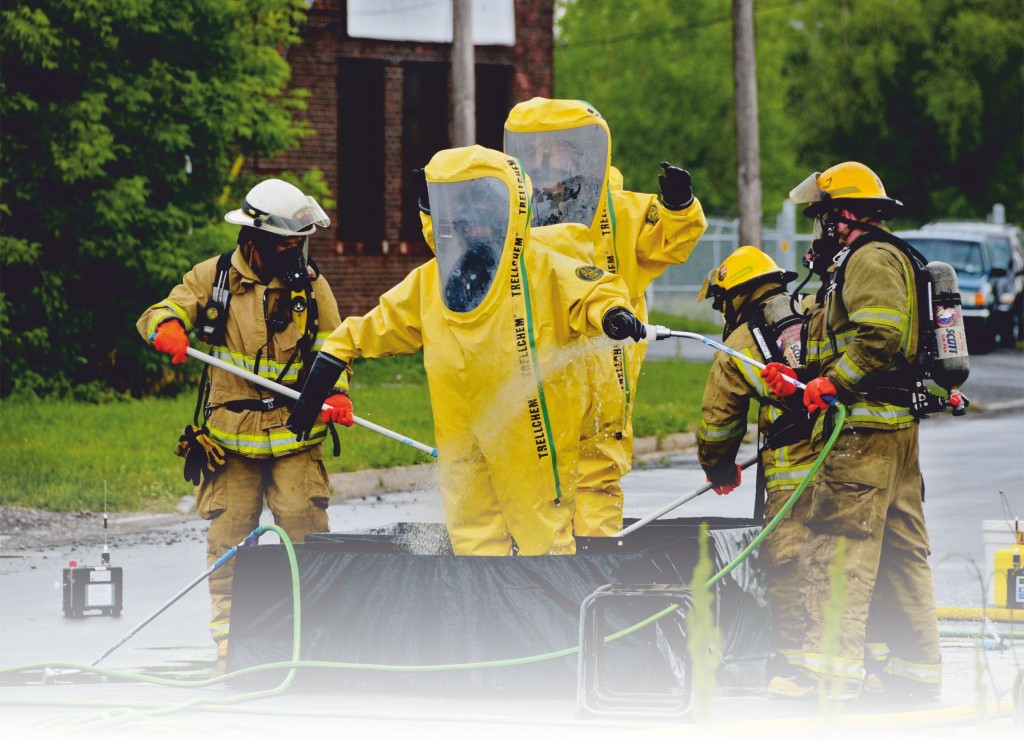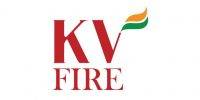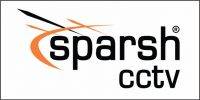 If hazardous materials are present, the threat of a spill looms.
If hazardous materials are present, the threat of a spill looms.
If a company stores, uses or transports hazardous materials, there is the possibility of a chemical spill. While federal regulations require employees to be trained to properly manage chemical spills, it is the responsibility of an owner to keep employees safe when doing so.
Companies can better prepare for a chemical spill and increase the safety of employees during an incident by providing potential first responders with basic information on recognizing different types of spills and how to respond.
The first step in protecting employees and providing first responders with the information they need to provide an adequate response, is to properly identify the type of spill. Any incident involving the spill or release of hazardous chemicals, mixtures of such chemicals or hazardous waste can be categorized into three distinct groups in terms of emergency recognition:
- Releases that clearly are incidental.
- Releases that clearly require emergency response.
- Releases that may be incidental or may require emergency response, depending upon circumstances.
Incidental Spills
OSHA defines an incidental release or spill as “a release of a hazardous substance which does not pose a significant safety or health hazard to employees in the immediate vicinity or to the worker cleaning it up, nor does it have the potential to become an emergency.” Incidental spills do not require an emergency response, and may be cleaned up by employees working in the area where the spill occurred or by maintenance personnel.
While incidental spills do not require hazwoper-trained cleanup personnel, spill response personnel do need to be trained in hazard communication and to use appropriate personal protective equipment consistent with federal or state OSHA regulations.
Emergency Response Spills
An emergency response spill, however, requires the intervention of spill cleanup specialists to safely contain and remove the spilled material. An emergency response spill is defined by 29 CFR 1910.120 as follows: Response efforts conducted by employees outside of the immediate area of release or by other designated responders (fire departments, internal hazmat teams, etc.) to an occurrence which results, or is likely to result, in an uncontrolled release of a hazardous substance. It is important to note that a hazwoper-trained team must manage these spills.
Emergency response spills have the potential to occur anywhere: at hospitals and power plants, in hardware stores and as a result of highway accidents. No place is free from the potential for an emergency response spill if hazardous materials are present.
Examples of emergency response spills include spills involving high levels of toxic substances and situations immediately dangerous to life and health (IDLH). If area employees are not certified to don appropriate respiratory protection, a spill that exceeds the ceiling permissible exposure limit would also require an emergency response.
Risk Assessment
When responding to a spill, employees first should assess the risk surrounding the situation. For instance, they should determine the actual volume of the spilled material. Even a very small spill of a highly toxic chemical could cross the emergency response threshold. Other factors that should be considered during the risk assessment include:
- Nature of the hazard properties of the material (i.e., flammability, corrosivity, toxicity, etc.).
- Degree of hazard and routes of entry if toxic.
- Physical state (powder, granular, liquid, gaseous).
- Physical properties of the materials.
- Specific circumstances of the release. These include the location of the spill, the level of ventilation and the knowledge and experience of area personnel.
Expecting the Unexpected
Rarely is a spill expected. A spill occurs only when a system of hazardous material containment fails, usually as a result of a chain of unfortunate events. The potential for chemical spills exists anywhere these materials are stored, used or transported, and unforeseen chemical spills can threaten employees, customers and the general public. Even when personnel safely are evacuated from the spill zone, emergency response spills often lead to serious business interruption, facility or environmental damage, as well as other potential for financial impact.
Preparing for Spills
Emergency response preparedness and planning is a very detailed and costly program that involves equipping and training a hazmat team. Training typically includes 24 to 40 hours of combined classroom education and hands-on instruction in practical spill response techniques. OSHA mandates annual refresher training, and prudent EHS managers recognize the need for frequent drilling to maintain team readiness.
Equipment requirements vary depending upon the nature of the potential emergency response scenarios to which the hazmat team is expected to respond. Typical equipment includes protective clothing, air monitoring equipment, self-contained breathing apparatus, tools and absorbent materials that can cost thousands of dollars.
Maintaining a hazmat team requires a considerable investment in time. Time must be provided for emergency response planning (including pre-emergency assessment for on-site teams), developing resources for cooperation, annual medical evaluations, developing safety and health programs, performing recurrent training, maintaining personal protective equipment programs, air monitoring equipment maintenance and preparation for decontamination procedures.
Outsourcing Emergency Response
Staffing an in-house emergency response team is acceptance of sole legal responsibility for personnel as well as the effectiveness of the response and subsequent cleanup. As a result, some companies choose to outsource emergency response as an alternative to training, equipping and maintaining an emergency response team. In most circumstances, outsourcing means identifying and qualifying an emergency response contractor (or perhaps two or three, to ensure availability) to respond on an on-call basis to spill events. Qualifying contractors is essential and best performed by an environmental professional aware of appropriate criteria and experienced in such evaluations.
lternatively, many companies contract with environmental, health, and safety information providers that pre-qualify local emergency response contractors and provide a call center to manage emergency responses, interact with regulatory agencies and perform subsequent reporting in the event of an emergency response spill.
Preparing to deal effectively with a significant spill of hazardous materials is good business, but the implementation of an in-house emergency response team can be very costly and time consuming. Many companies are not willing to take on the additional responsibilities and cost for such a program. For these firms, a wise alternative may be found in environmental, health and safety information service providers that offer 24-7/365 emergency response capabilities.
Whichever the selected approach – internal team development or outsourced assistance – the key to success in the event of a hazardous materials spill is preparation.




















































